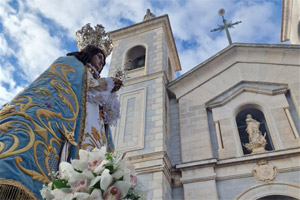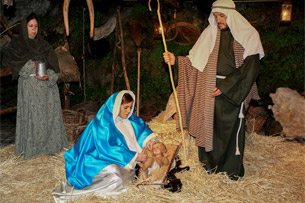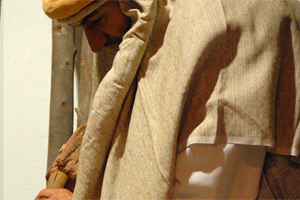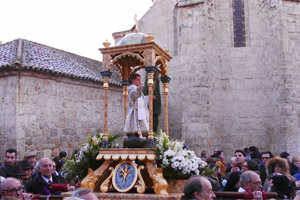The Dance of the Stilts
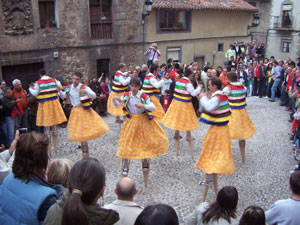
The Dance of the Stilts is a folk festival, held every year in Spain, in the town of Anguiano, La Rioja. It is a very special event, where eight young people in wide skirts and mounted on stilts 50 centimeters high, go through the streets of the town avoiding all kindsof obstacles.
Featured photo of home: Dancers in the Plaza de la Obra, BigSus - Image created by me., CC BY 2.5
Where does this tradition originate?
This original and extravagant custom, originates from a region of Burgos, Spain where there is a small river called "Najerilla", which in order to cross it, it was necessary to use stilts to avoid humid places or protect yourself when the great snowfalls arrived.
It is still unknown because the Stilt Dance was incorporated into the traditional celebration of the Virgen of Magdalene.
Although it is believed, that this tradition is older. There is evidence to confirm that Stilts Dance, already existed in the 1600s or perhaps in pre-Christian time.
What does the Stilt Dance consist of?

The show begins with a mass in commemoration of the Virgin of the Magdalena, then the young people, on stilts and dressed in a traditional costume, begins the so-called "Danza el Agudo".
The dancers will have to turn down some steps and cross the narrow "Cuesta de los Danzadores", which is quite steep and dangerous. To the beat of the music and the sound of castanets, they reach the plaza, where they are greeted by the crowd, who act as a mattress and stop a possible fall.
Once again, the young people go one by one up the hill, where they meet the musicians and go to the Town Hall Square. Next, they take off the stilts and the skirts to start the dance called "Los Troqueaos".
To avoid a dramatic fall of the stilts, these young people help themselves with the skirt, which acts as a bell and is what allows them to remain stable and not lose their balance.
What is the appropriate dress for the Stilt Dance?
To add a touch of showiness and beauty to the Dance of the Stilts, the participants must wear special clothing, very colorful and striking like the one described below:
Stilts:
They are long wooden sticks of approximately 50 centimeters. They must be tied to both the ankle and the knee with very strong ropes.
Vests:
Very colorful, with seven different colors such as red, green, blue, brown and yellow, pink and light blue
Trousers:
It is black and has a colored tape on the knee
Shirt:
It is totally white, adorned on the sleeves
Skirt:
A very important element of yellow color
Espadrilles:
It is the traditional footwear, white with black ribbons
Girdle:
It is blue
Castanets:
They are designed of wood and made by hand.
When does the Stilt Dance take place?
The Dance of the Stilts, is an event that takes place twice a year, during the months of July and September. For three days, the residents and visitors will enjoy this event, which is annually expected with great satisfaction.
It all starts one day before Sunday, with the descent of the Virgin of Magdalene by the same young people who, later, climb on stilts. The image is taken to the village church, where it will remain in custody until September, when the celebration of the so-called "Fiestas de Gracias" is held.
The celebration begins on July 21, then on the 22nd, after the mass is over, the Magdalen festival begins, then it will be repeated on the 23rd and the closing will take place the last week of September, when the virgin is taken back to the hermitage.

